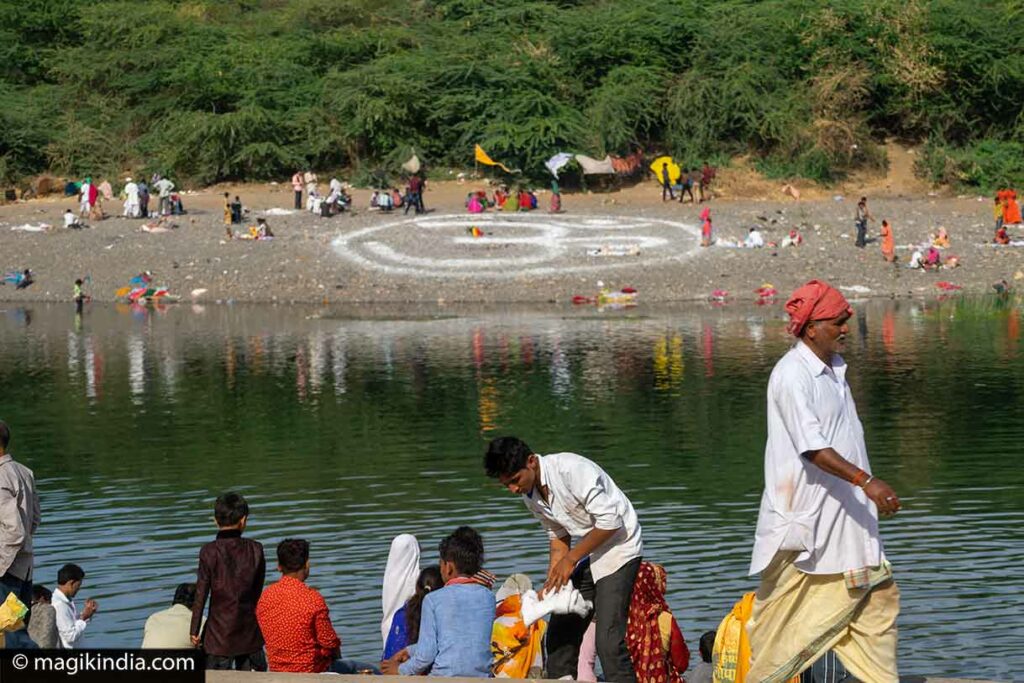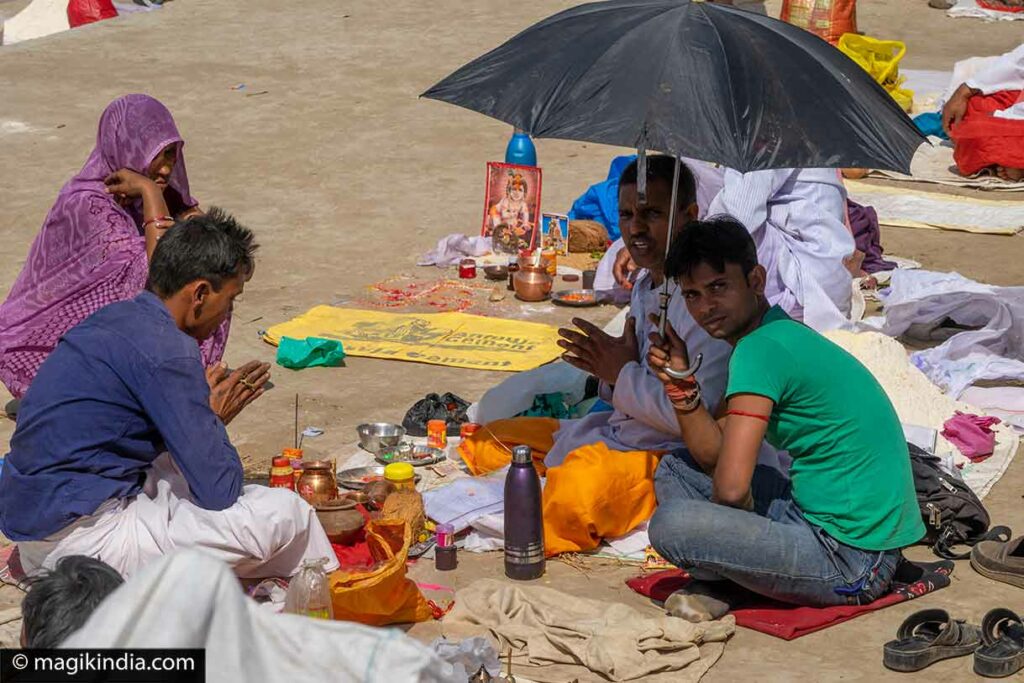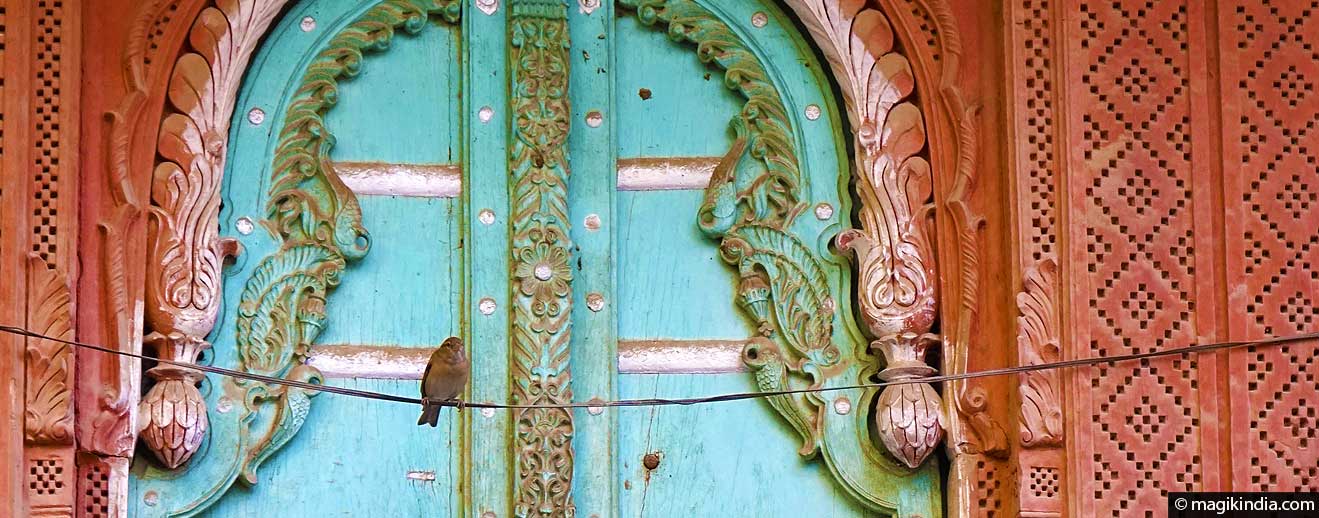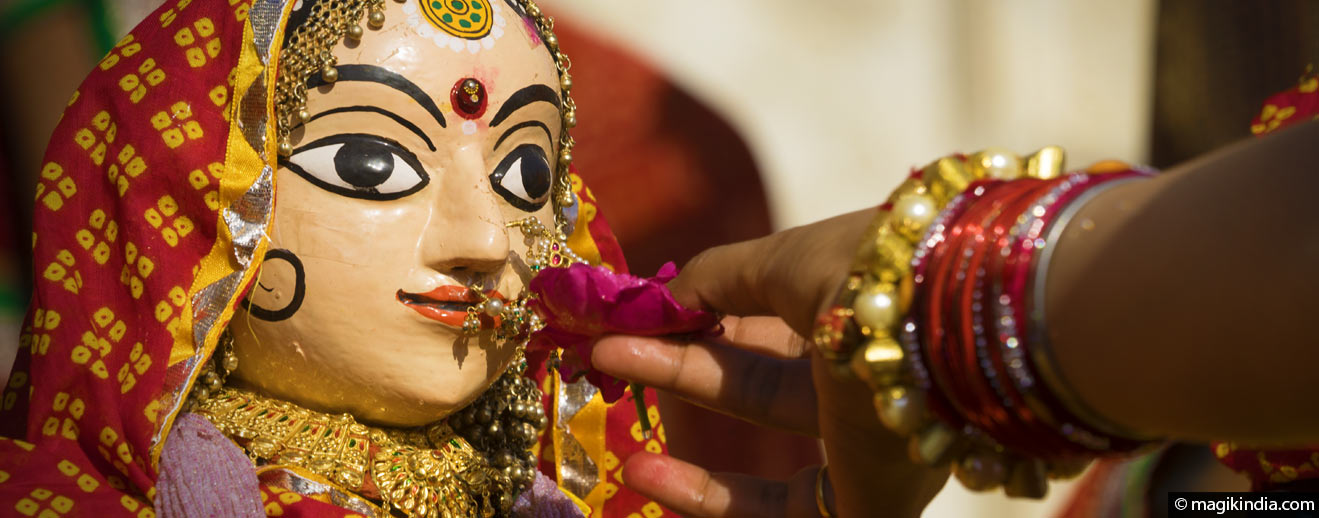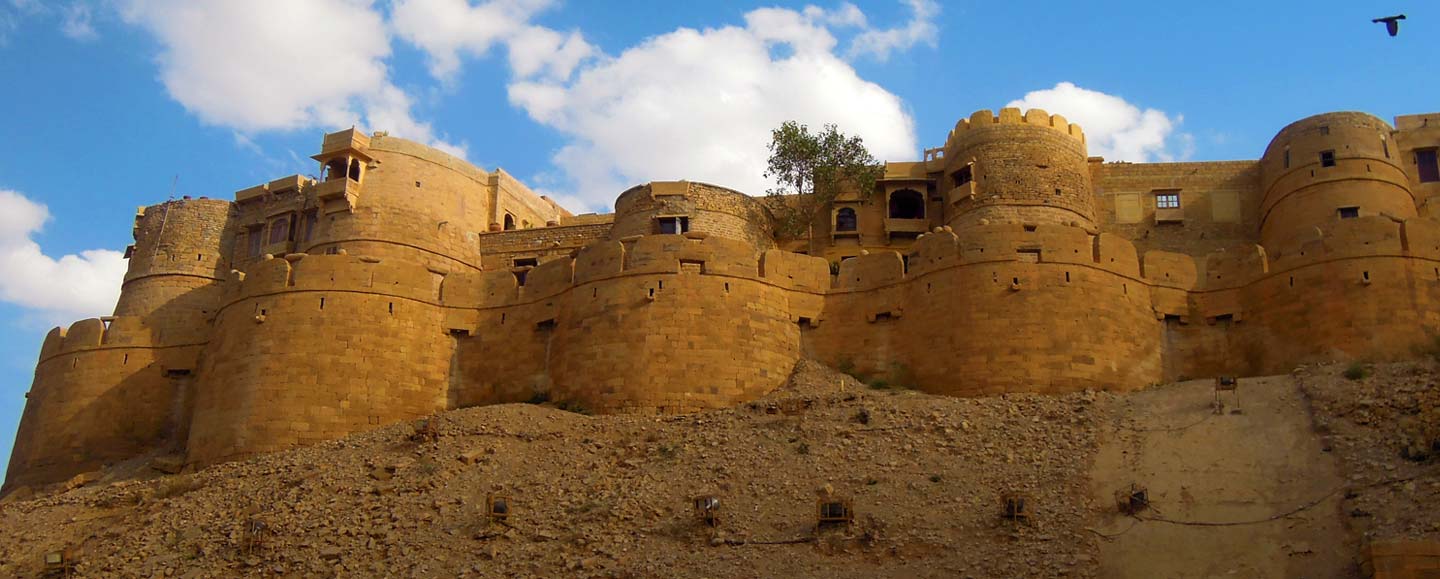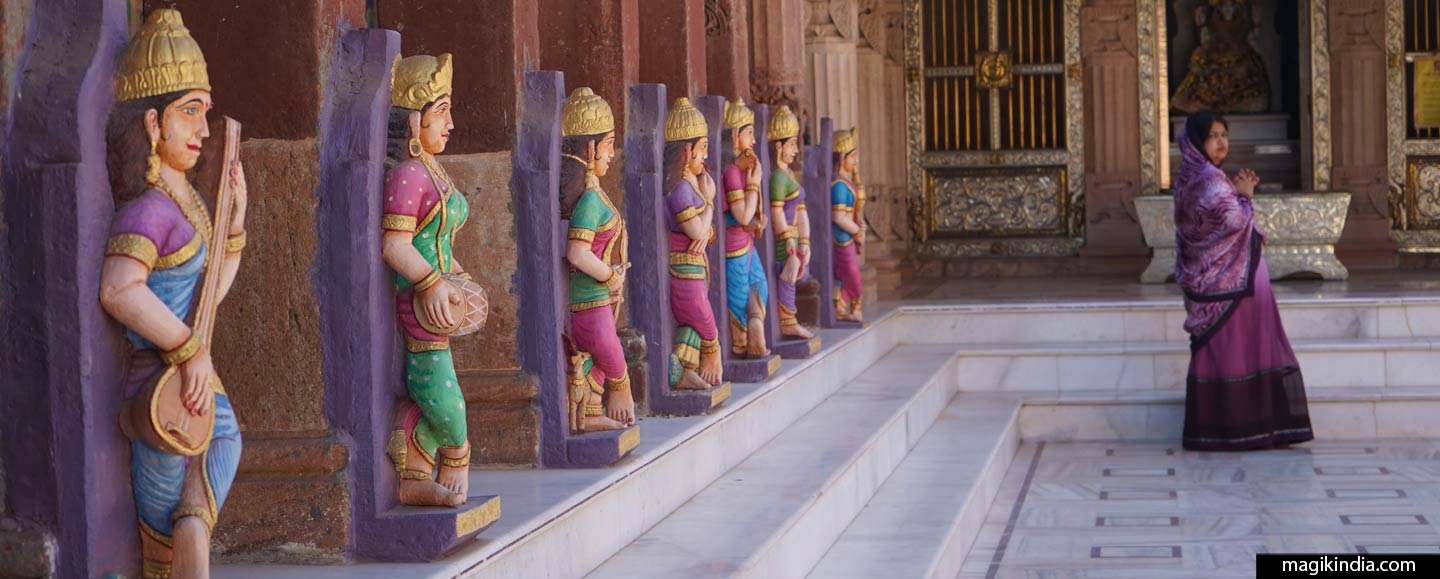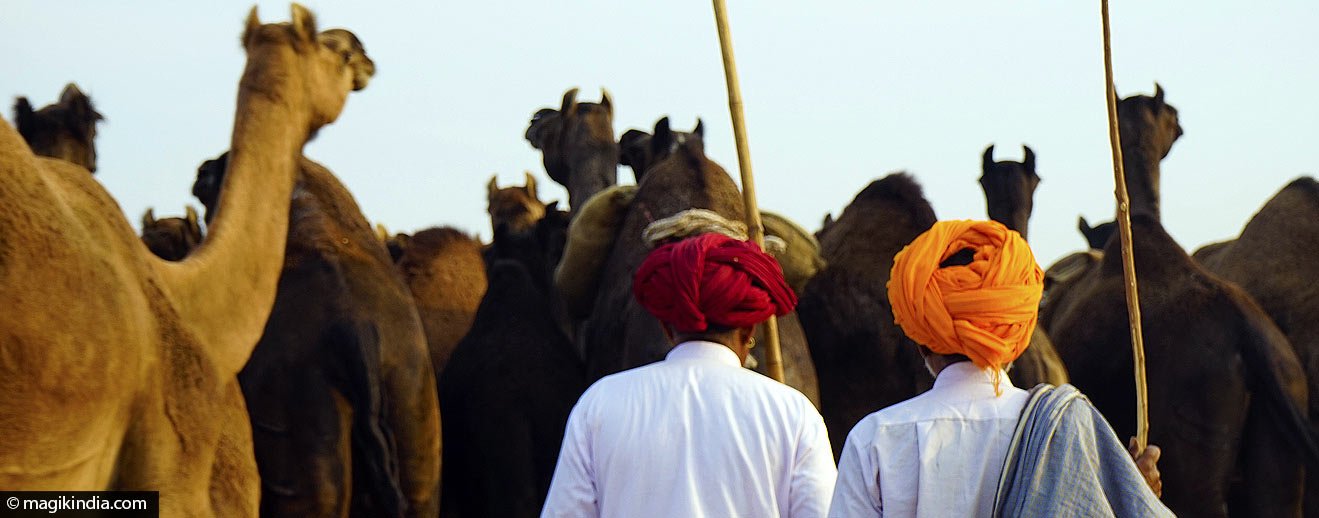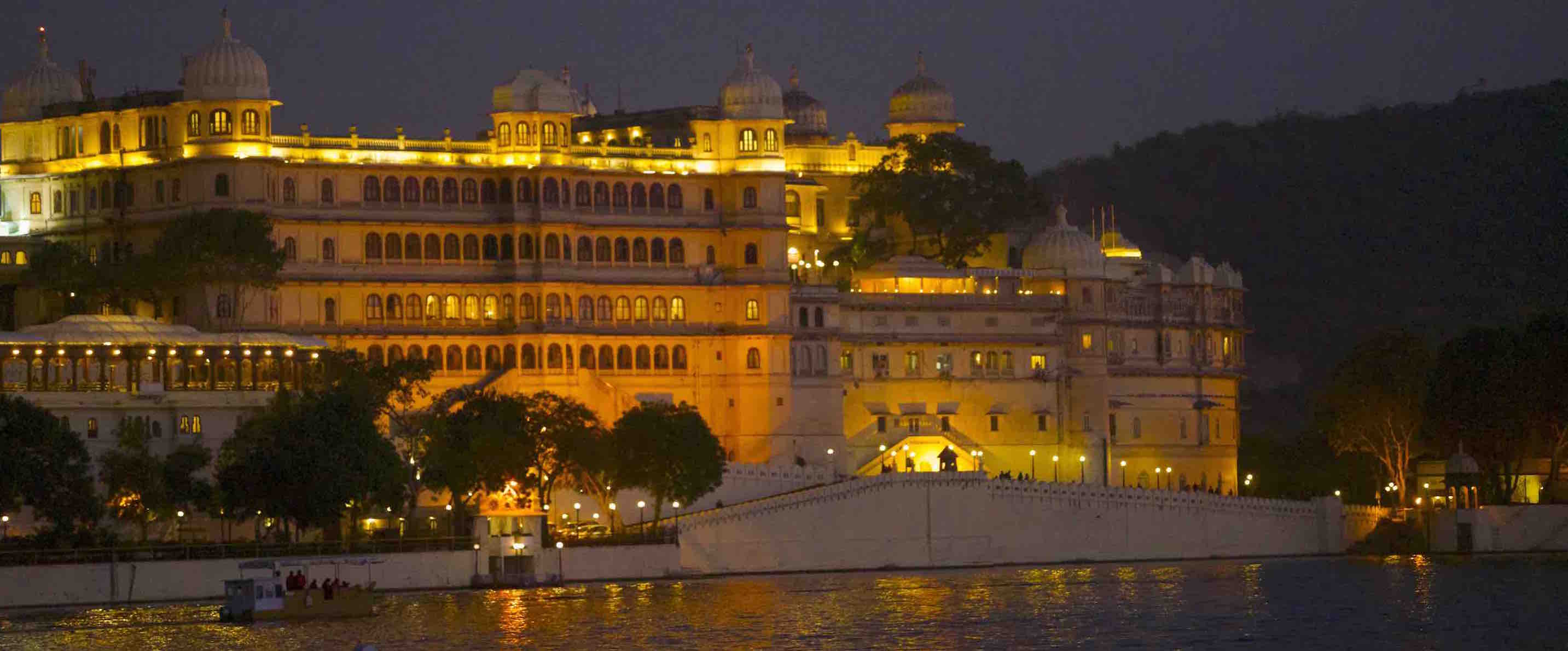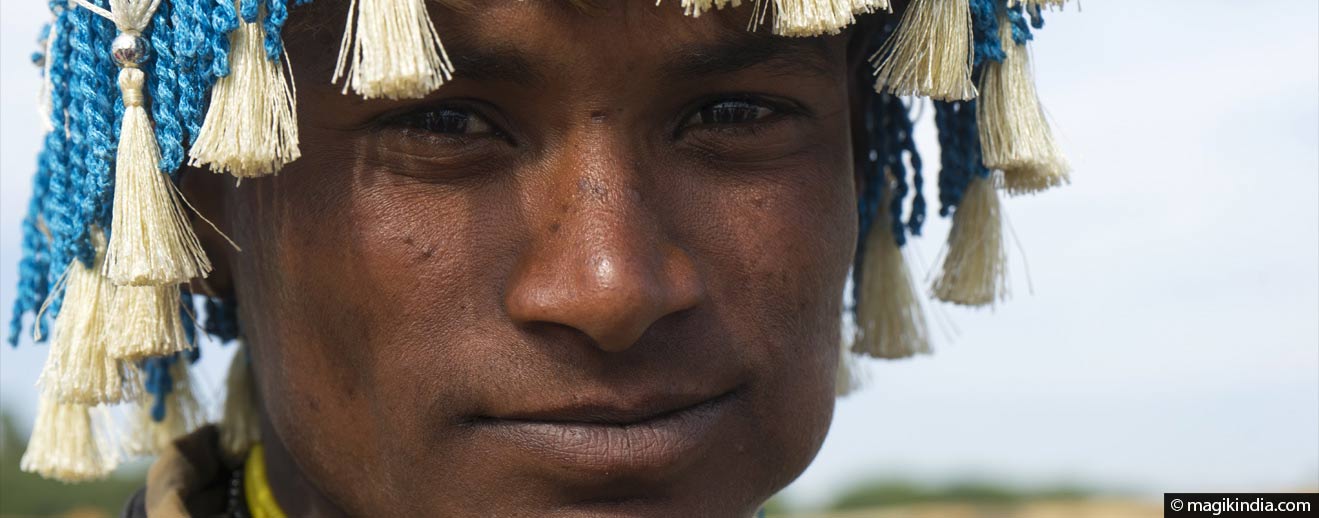
Baneshwar fair, the Kumbh Mela of Bhils
Baneshwar Fair is a huge folk fair held in Dungarpur district in Rajasthan. The 5-day event, which is sometimes called the “tribal Kumbh Mela”, takes place in January or February on a small delta where the Soma and Mahi rivers meet. It is primarily a religious festival, but it is also the annual get-together for Bhil tribal communities who come to pay homage to Shiva and Vishnu.
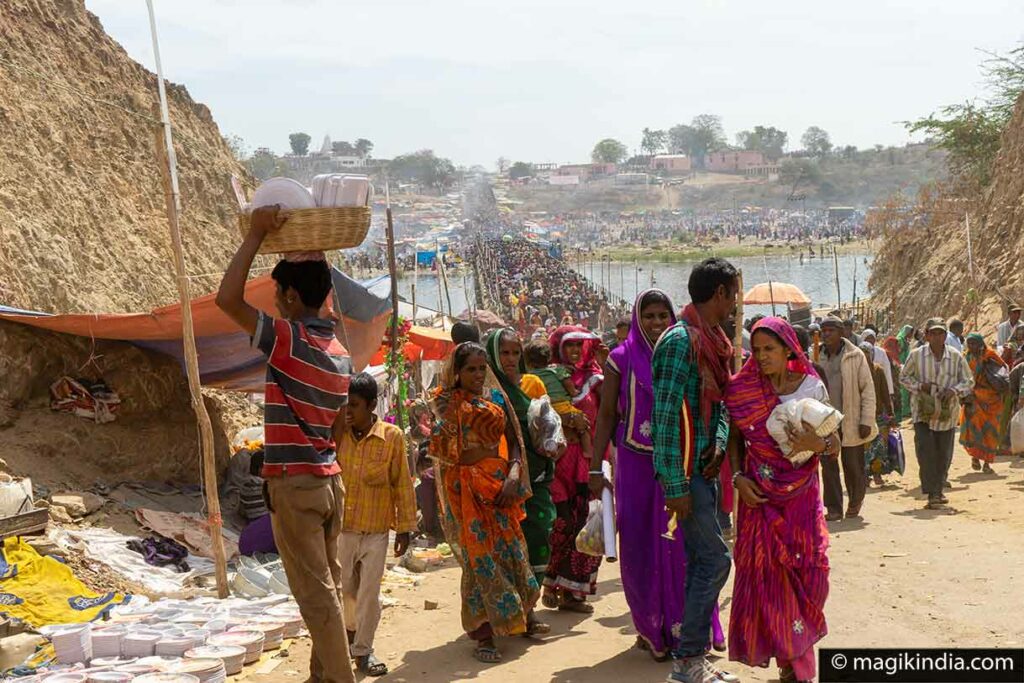
Baneshwar means “lord of the delta” in the local Vagdi tongue. It is taken from the name of the Shiva-lingam worshipped in Baneshwar Mahadev temple in Dungarpur.
Originally, the pilgrimage was dedicated entirely to Shiva, but Vishnu has also been included since another temple was built on the delta and dedicated to him.
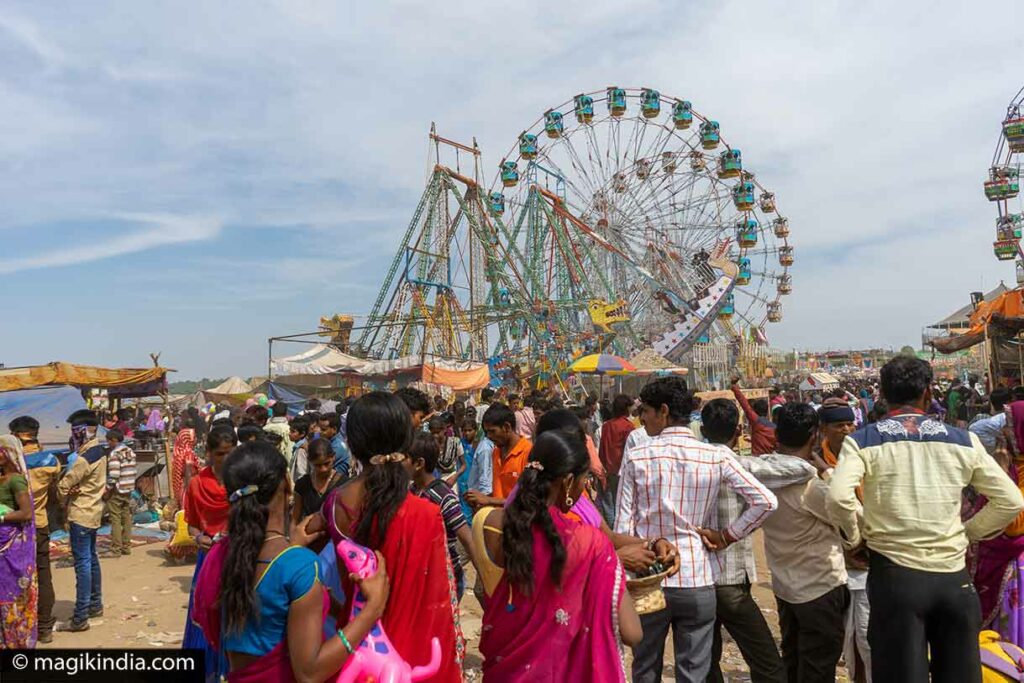
Baneshwar fair is a religious festival but also a secular fair, with vendors selling knick-knacks, clothing, medicinal herbs, musical instruments, wickerwork and knives as well as the bows and arrows that are famously emblematic of the Bhil community (see below). Folk song and dance are also on the menu, and a funfair on the banks of the delta.
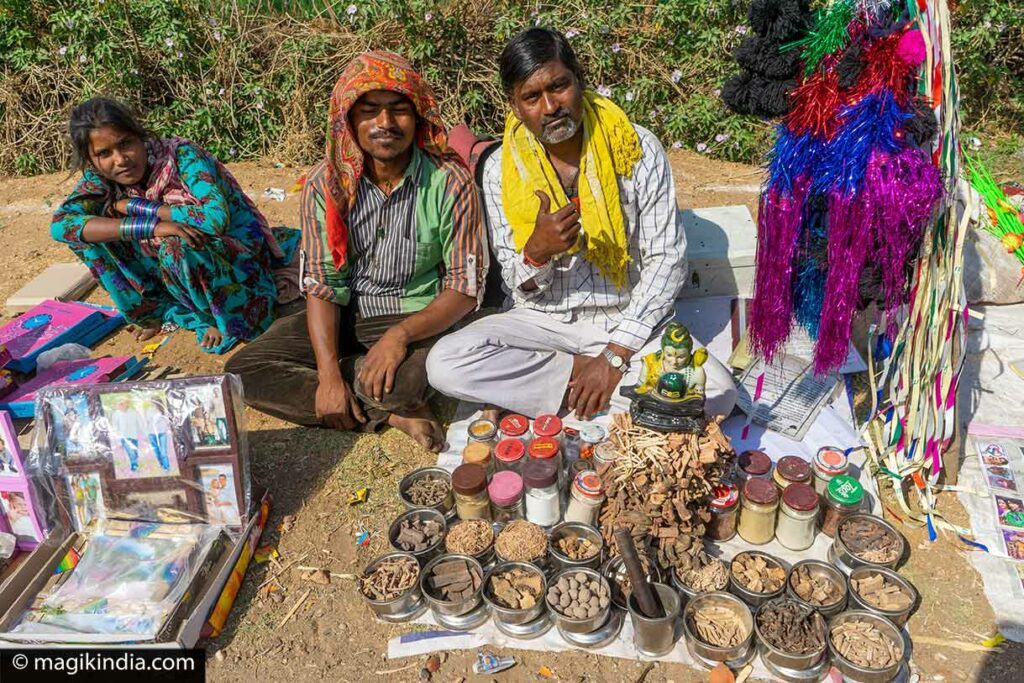
Bhil people
Baneshwar is mainly a tribal fair; half the congregation are Bhils, who come to the fair from the neighbouring areas of Dungarpur, Udaipur and Banswara or from further afield in the states of Madhya Pradesh and Gujarat.
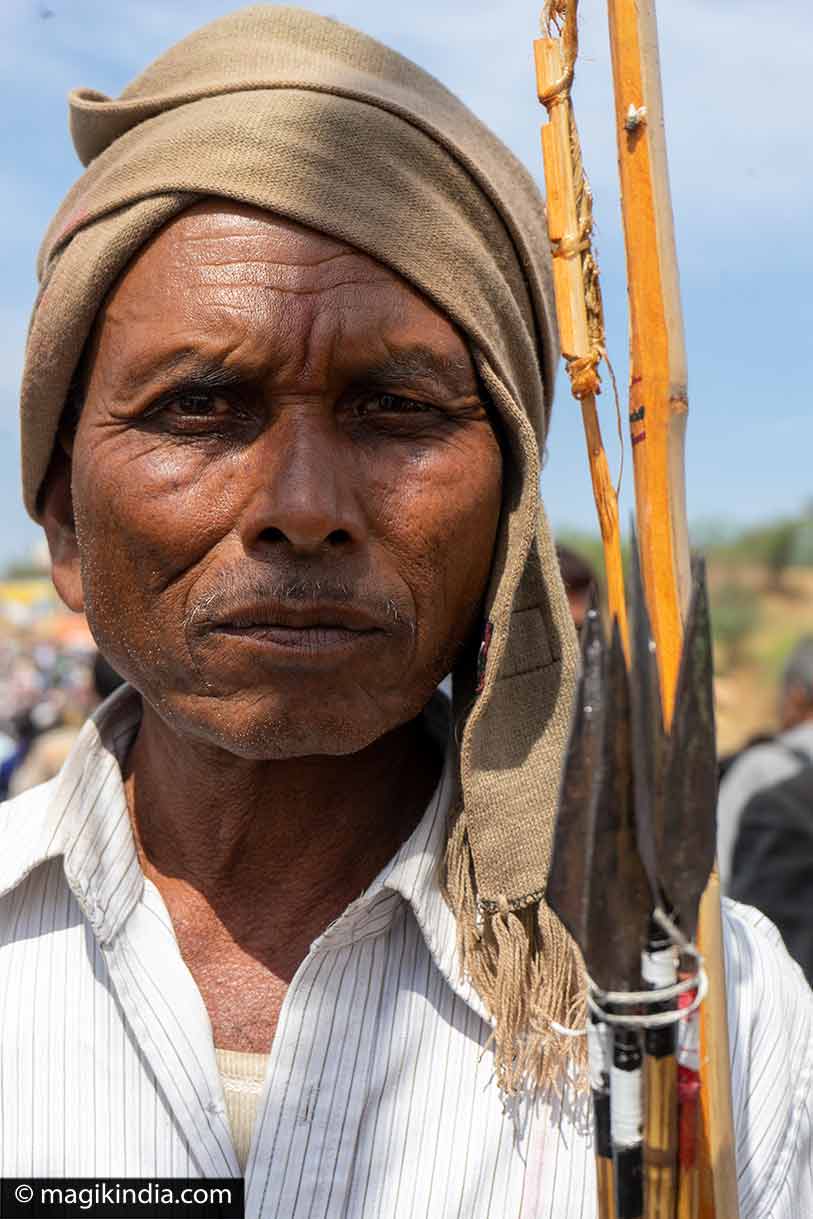
The Bhil community counts about 8 million people, living mainly in North India (Gujarat, Rajasthan, Madhya Pradesh, Andhra Pradesh) but also Central India (Chhattisgarh), the Northeast (Tripura) and South (Maharashtra, Karnataka). There are also Bhils settled in Bangladesh and in Tharparkar district, Sindh, Pakistan.
The Bhils were originally nomadic hunter-gatherers of Dravidian (South Indian) stock but speaking an Indo-Aryan (North Indian) language. They belong to the part of the Indian population known as adivasis: “first inhabitants”.
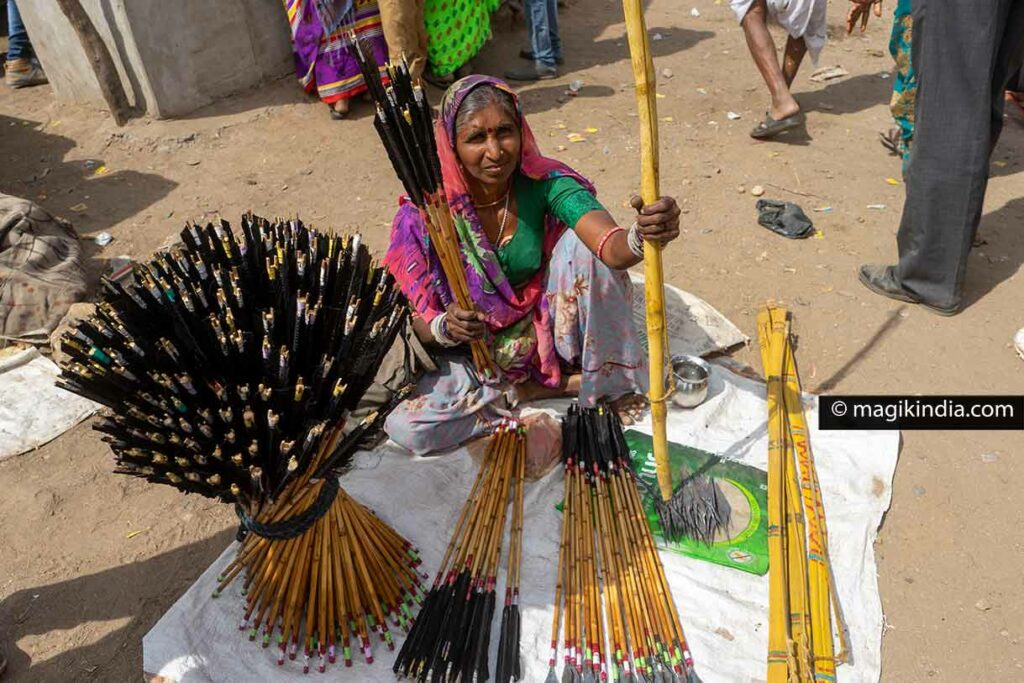
The term bhil is thought to derive from bhilli, which is the local-language word for a bow. The Bhil are renowned for their archery skills. They were already mentioned in India’s great sacred epic, the Mahabharata.
In feudal and colonial times, the Bhil were often used by the Rajasthani kings as scouts (shikari) because of their bravery and knowledge of the land. Many became soldiers and experts in guerrilla warfare. There is still a Bhil army corps in Rajasthan.
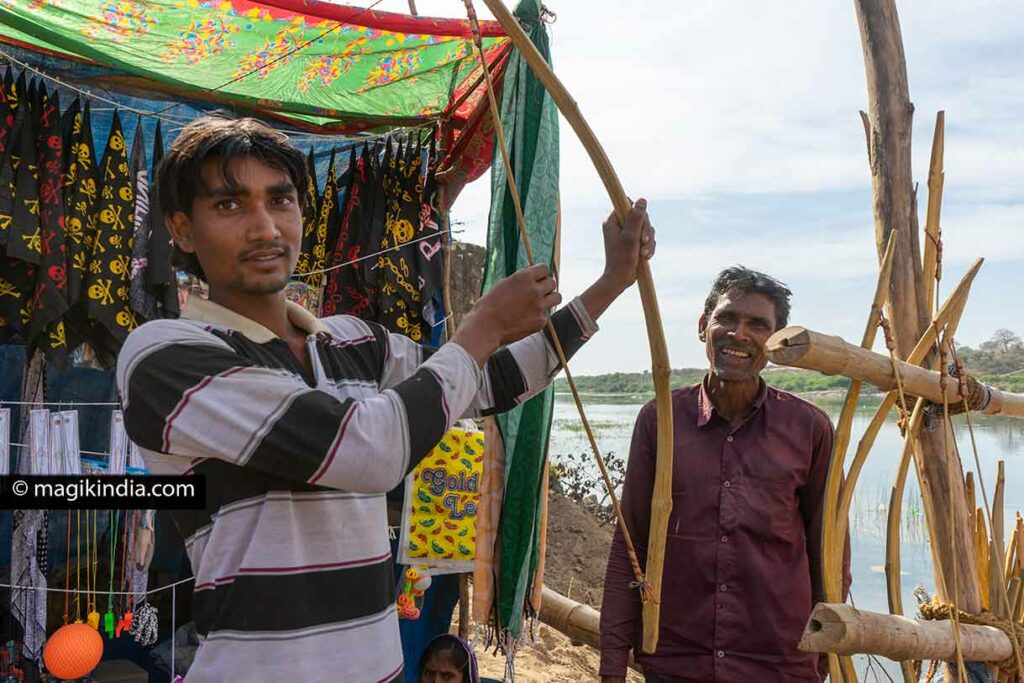
The Bhil have gradually settled, though some are hanging on in the last few square miles of their original forest homeland; industrialisation and illegal logging are forcing them out.
Bhil culture is mainly known for its traditional ghoomar dance, which has become one of the most popular dances in Rajasthan, and for the pithora paintings, produced in an elaborate ritual at the request of families who have had a wish fulfilled.

The two temples of Baneshwar
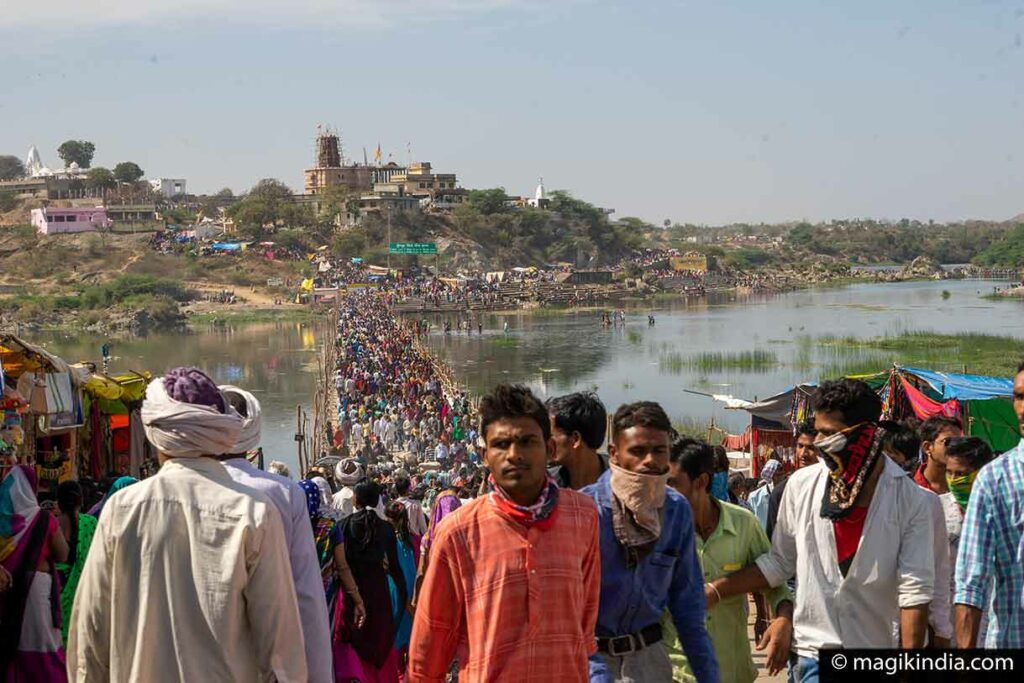
The pilgrimage originated with the Baneshwar Mahadev temple in Dungarpur, which houses a Shiva lingam. In the morning, saffron is applied to the lingam and in the evening bhabhut (ashes) are scattered on it. Worshippers generally make offerings of wheat flour, pulses, rice, jaggery (palm sugar), ghee, salt, chillies, coconut and money.
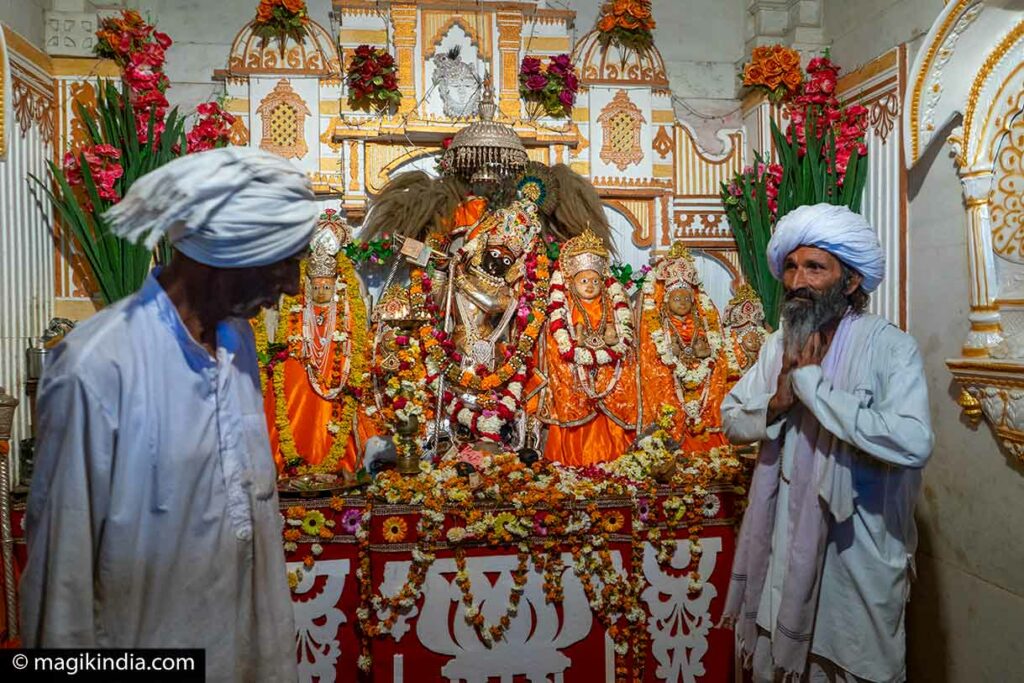
The other temple, dedicated to Vishnu, was built on the delta later by devotees of Mavji, a deeply venerated saint regarded as one of the avatars of Vishnu.
It was built in a place where Mavji is supposed to have sat in meditation. The temple houses idols of Narayana (a form of Vishnu) and his consort Lakshmi.
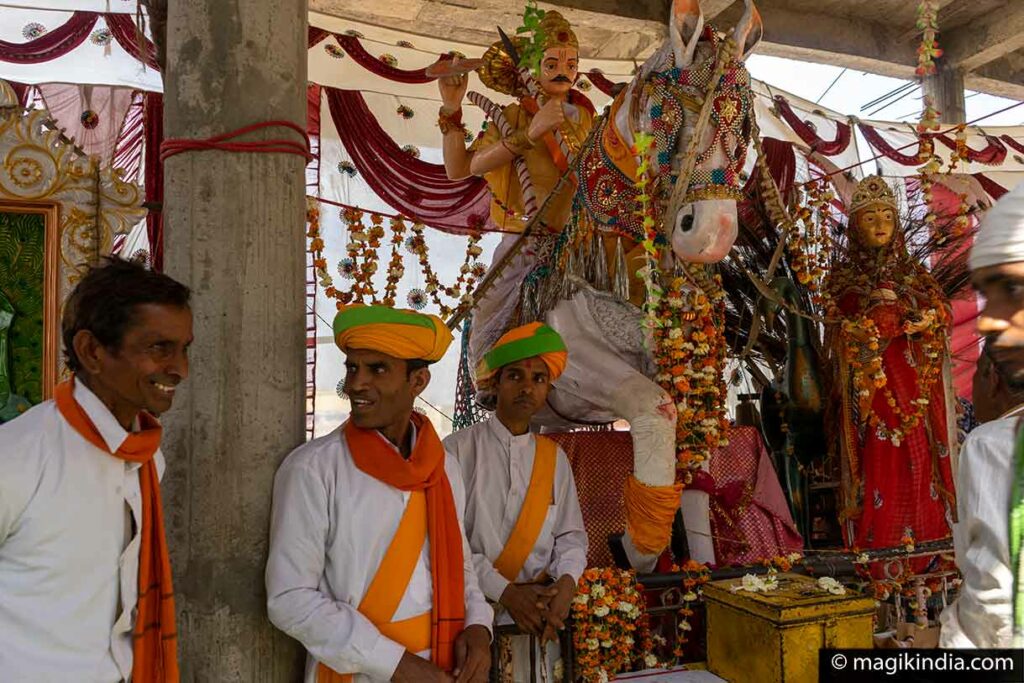
The day on which the temple statues were consecrated, in a ceremony called Pranapratishtha, was the eleventh day (called Ekadashi) of the Hindu month (magh) of Shukla. Ever since, the fair begins, according to the Hindu calendar, on Magh Shukla Ekadashi and lasts until Magh Shukla Purnima (full moon in the month of Shukla). This moveable date is set each year by astronomical calculations.
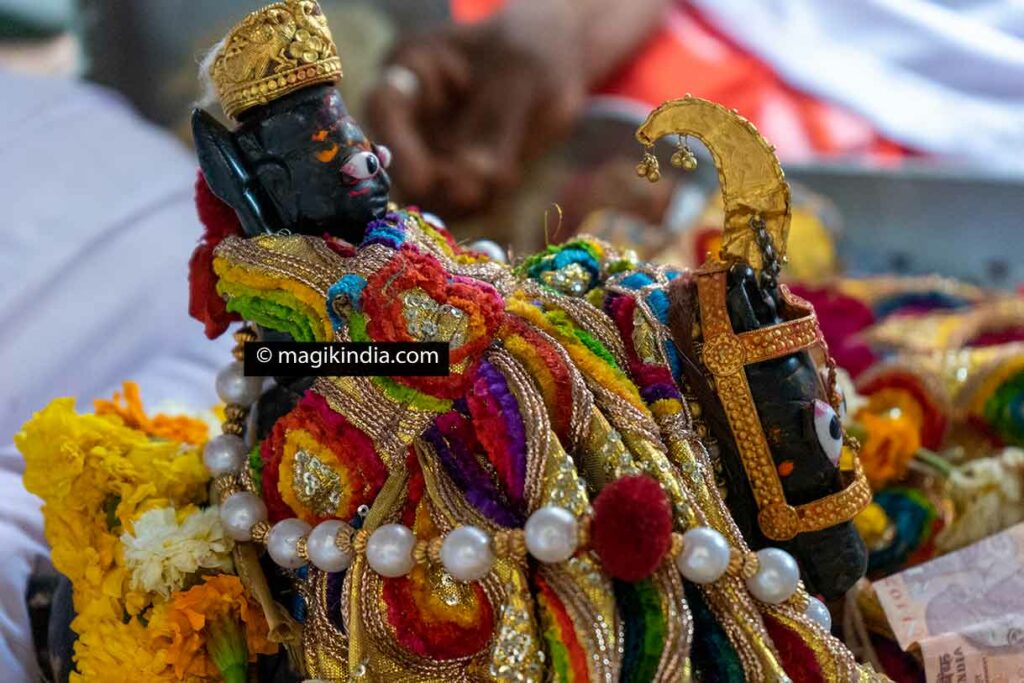
At Magh Shukla Ekadashi, a 10cm black stone idol of Mavji riding a horse is carried in procession in a silvery palanquin.
The temple priest, called mathadhish, arrives in another palanquin. He sits near the main altar beside the little Mavji statuette and devotees come to pay homage.
According to custom, devotees must carry the mathadhish to the confluence of the two rivers; this act sanctifies the confluence.
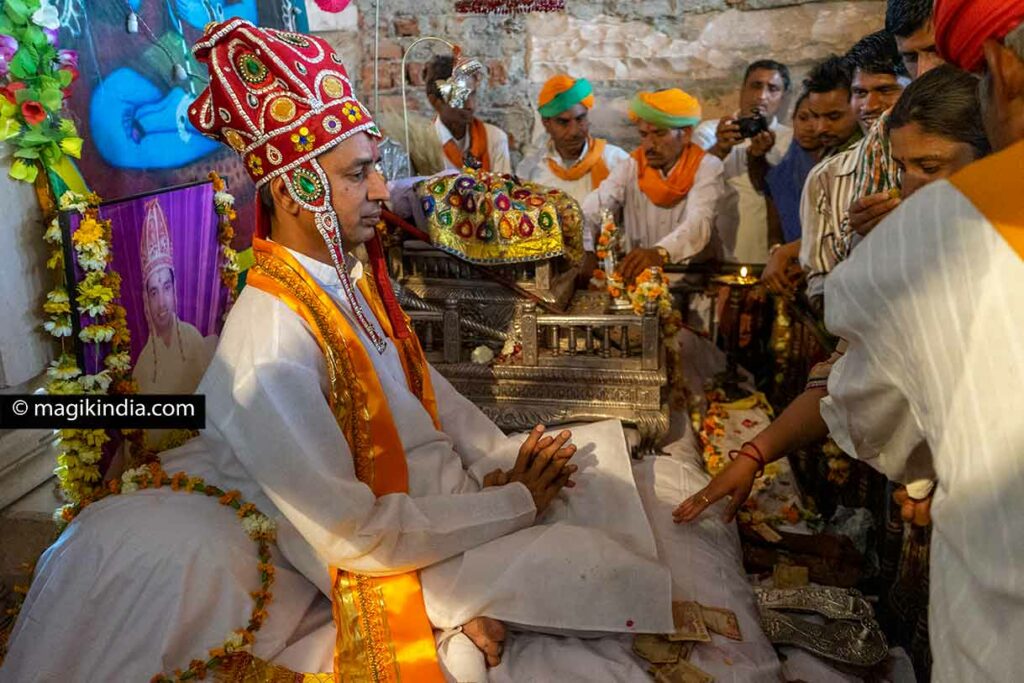
The delta is also a place of shradh* for the Bhils, who come there to scatter the ashes of their dead. *Shradh: religious rite for the salvation of the souls of the dead.
